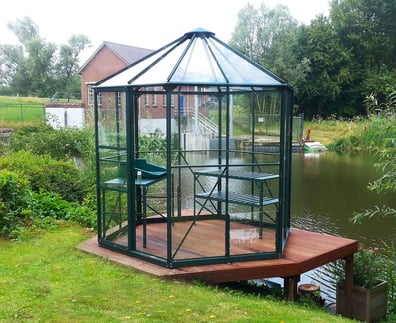Choosing the Right Greenhouse: Materials, Size, and Features
Choosing the Right Greenhouse: Materials, Size, and Features
Blog Article
Greenhouse farming is one of the very rewarding methods to develop flowers year-round, but it needs careful preparing and methods to make sure success. With controlled situations, you can foster plants no matter outside temperature, but it requires the proper methods to create a great atmosphere inside your greenhouse.Here are a few important tips to help your flowers prosper throughout the year.

Focus on Temperature Control
Maintaining the proper temperature is crucial for greenhousegardening. Plants prosper in different temperature ranges depending on their type, therefore it's important to monitor and adjust temperatures accordingly. All through colder months, invest in a reliable greenhouse heater or padding methods to maintain warmth. Use automated ports or supporters in summer to avoid overheating, as temperatures over 85°F can strain plants and stunt their growth. Pairing these systems with an easy thermometer lets you keep a consistent environment.
Manage Humidity Levels
While greenhouses obviously maintain higher moisture levels, too much water may inspire mold or form growth. For a wholesome harmony, calculate humidity frequently using a hygrometer. Strive for approximately 50-70% relative moisture, changing with proper ventilation systems or perhaps a dehumidifier if needed. Moreover, space flowers effectively assures greater air circulation, reducing the danger of fungal diseases.
Choose the Right Plants
Not absolutely all flowers are ideal for greenhouses. To maximise yield and success, pick crops that align well with the season and your greenhouse conditions. During colder months, grow crops like lettuce, kale, or broccoli, which succeed in a colder environment. Warm-weather crops like tomatoes, cucumbers, and peppers blossom in the spring or summer within larger temperatures. Pairing complementary crops also helps develop biodiversity and normally deters pests.

Use Quality Soil and Fertilizers
The caliber of your earth immediately affects plant growth. Select a nutrient-rich land combine created specifically for greenhouse plants. Enrich your planting bedrooms with organic matter like compost to enhance fertility. Frequently feed your flowers with fertilizers matched to their needs—some plants may possibly require high nitrogen for leafy growth, while others flourish with potassium-rich recipes for good fresh fruit development.
Practice Integrated Pest Management
Pests will get their way into also the most controlled greenhouses. Add valuable bugs like ladybugs to target dangerous pests such as for example aphids naturally. Inspect plants usually and remove any pests physically if spotted early. Consider normal or chemical solutions as a final resort but utilize them modestly to prevent harming beneficial germs and organisms.
For more information you should click on this link greenhouses. Report this page